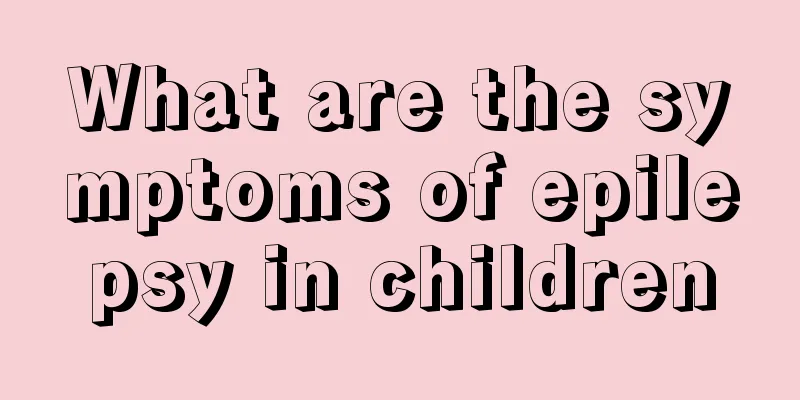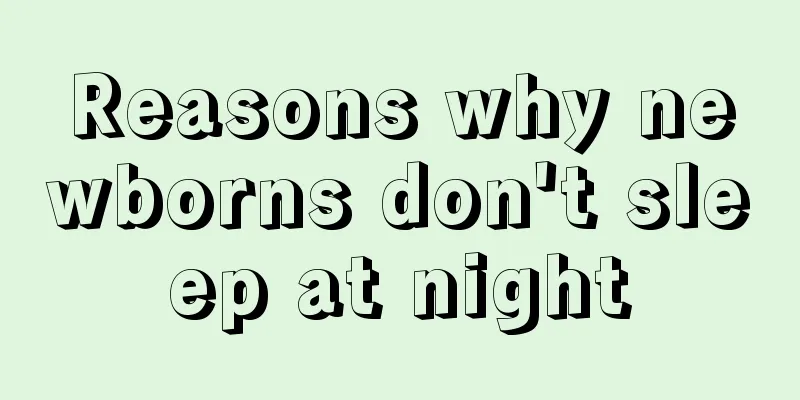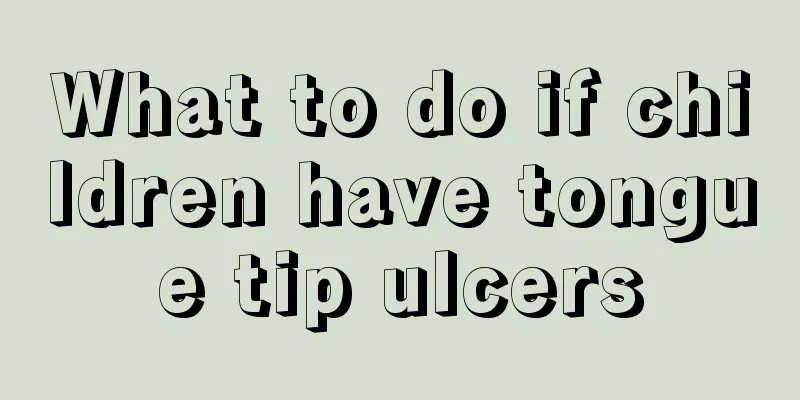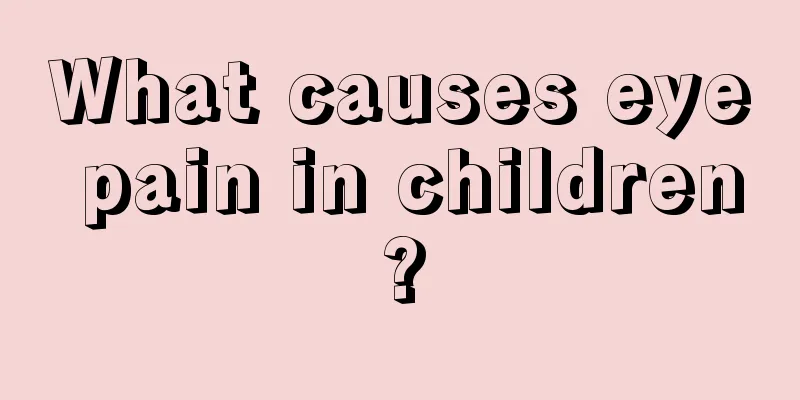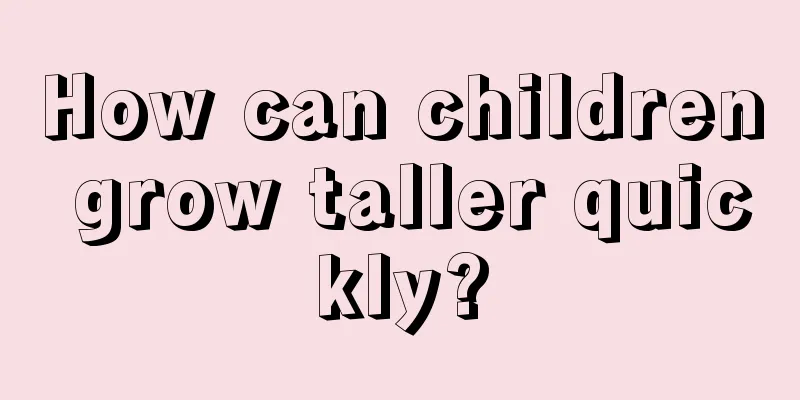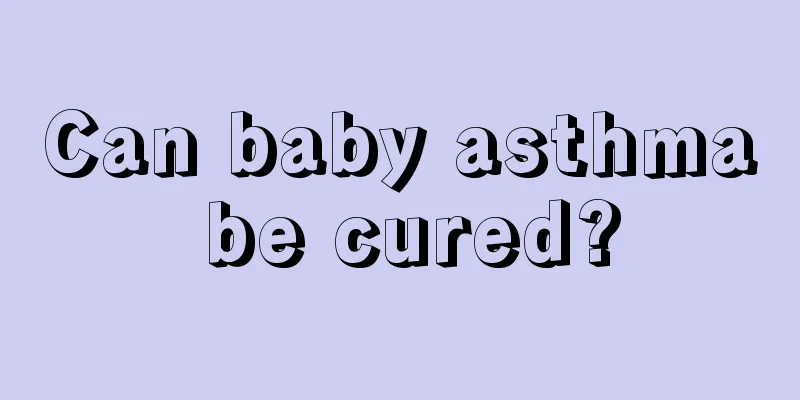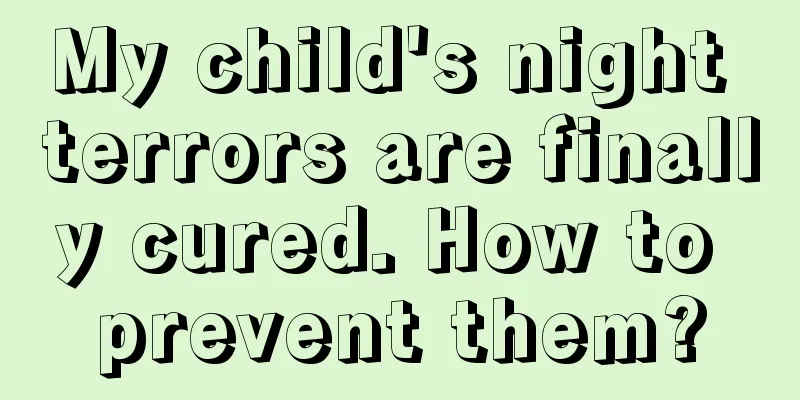What should I do if my child has a severe dry cough?
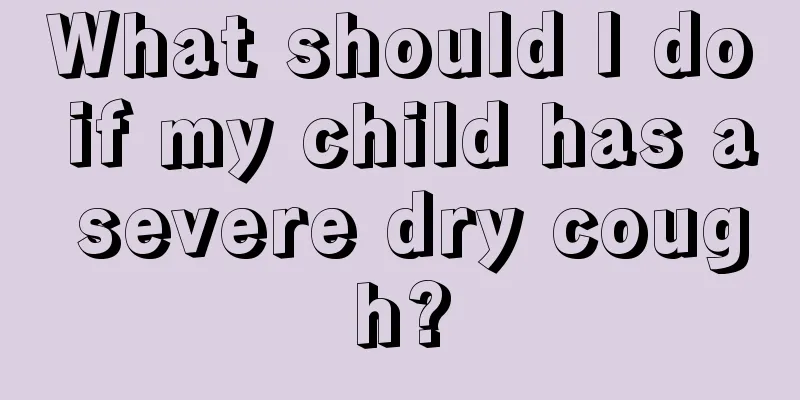
|
Children due to low physical function. So it is very easy to get sick. Among them, cold is a common disease among children. A cold is often accompanied by cough and fever. Although cough and fever are normal, some babies will keep having dry coughs. Mothers will still feel very distressed when they hear this and want to stop their baby's cough quickly. So what should they do if their baby keeps having dry coughs? 1. Coughs that require immediate medical attention 1. When a child suddenly coughs severely and has difficulty breathing, there may be a foreign object blocking the trachea. Things that are easily swallowed by mistake include peanuts, pencil cases, pills, buttons, coins, candies, etc. If they are discovered immediately and emergency measures are taken to remove them, it is fine. However, if the foreign object is not discovered and is stuck in the airway, it is very dangerous. 2. If you have a high fever, cough, wheezing and difficulty breathing, you need to go to the hospital for emergency treatment immediately. 3. Babies are very likely to suffer from bronchiolitis, a type of pneumonia. At this time, the child's complexion is not good, often turns purple, or has faster breathing, raises shoulders to breathe, and the lower chest wall collapses when inhaling. They should be sent to the hospital for treatment in time. 2/7 2. Cough that can be observed first and not rushed to hospital 1. Although there is cough and fever, the patient is in good spirits. It is mostly a cold or tonsillitis. 2. Coughing continues after having a cold, fever and cough. 3. Cough and excessive sputum, but no fever and good spirits. 4. Coughing that only occurs in the early morning. 5. You may cough slightly when you are nervous or after exercise. 3. Diet therapy Parents do not need to worry too much about the above 5 types of coughs. They can first relieve the symptoms and treat the cough through diet therapy. Because coughs can be divided into exogenous coughs and endogenous coughs, and exogenous coughs can be divided into wind-cold coughs and wind-heat coughs, different types of coughs require completely different medications, so the dietary therapy methods are also different, and it is more complicated to distinguish them. Here I will teach parents a simple method, which is to observe the child's tongue coating. If the tongue coating is white, just like snow in winter, it means that the child has a severe cold, and the sputum of the cough is thinner, white and sticky, and there is also nasal congestion and runny nose. At this time, you should eat some warm, expectorant and cough-relieving foods. If the child's tongue coating is yellow or red, it means that the child has a lot of internal heat, the sputum from coughing is yellow and thick, and it is not easy to cough up, and there is a sore throat. At this time, the child should eat some foods that clear the lungs, resolve phlegm and relieve cough. Internal injury coughs are mostly long-term coughs and recurrent coughs. At this time, parents should pay attention to giving their children some foods that regulate the spleen and stomach, nourish the kidneys, and replenish the lung qi. The specific methods are as follows: 1. Ginger + brown sugar + garlic: When children catch a cold, drinking warm ginger and brown sugar water can play a good therapeutic role. If the child also has a cough, add 2-3 cloves of garlic to the ginger and brown sugar water and cook them together. Cook on low heat for 10 minutes to cook off the spiciness of the garlic so that the child will be willing to drink it. 2. Steamed garlic water: Take 2-3 cloves of garlic, smash them, put them in a bowl, add half a bowl of water, put in a piece of rock sugar, cover the bowl, put it in the pot to steam, bring to a boil over high heat, then simmer for 15 minutes over low heat. When the garlic water in the bowl is no longer hot but still relatively warm, feed it to the child. The garlic does not need to be eaten. Generally, feed it 2-3 times a day, half a bowl each time. If the child is 5-6 years old, 4-5 cloves of garlic can be used, and adults can use 7-8 cloves. Garlic is warm in nature and enters the spleen, stomach and lung meridians. It is very effective in treating cold coughs and kidney deficiency coughs. It is also convenient and simple, and children are willing to drink it. |
<<: Is it really good for babies to bathe with mugwort leaves?
>>: How to treat bedwetting in children? These remedies are effective
Recommend
Treatment of brain atrophy in children
I believe everyone is familiar with the disease o...
Treatment for baby's cough and phlegm during sleep
As parents, we are all worried when our babies co...
What are the golden periods for children to grow?
Physical growth is the basic manifestation of chi...
Feeding and care of newborns
Many parents are first-time parents, so they alwa...
Why are baby's gums white?
Many parents will notice that their baby’s gums a...
Child's uncoordinated movements
It is understood that there are great differences...
Why does the baby keep crying?
Babies are weak, and many of them cry because of ...
What is the treatment for sinusitis in children?
Children are also susceptible to rhinitis, so if ...
Can expired diapers still be used?
In order to save time and energy on shopping, or ...
When should the baby eat VD?
For babies, every nutrient in the body is indispe...
What to do if a newborn has a fever or cold
Newborns are most susceptible to illness because ...
There are red blood spots under the skin on the child's face
Generally, only adults are more likely to have re...
Can a two month old baby sleep on his side?
The addition of a new member to the family is a j...
What should I do if my child has a fever and is having convulsions?
Children usually don't pay attention to their...
What should I do if my baby has a reversed day and night cycle? These methods deal with
Many parents are particularly distressed because ...
